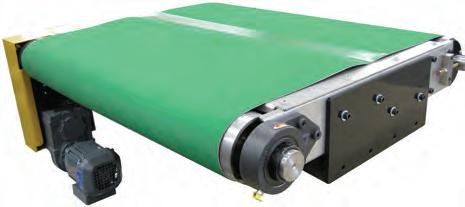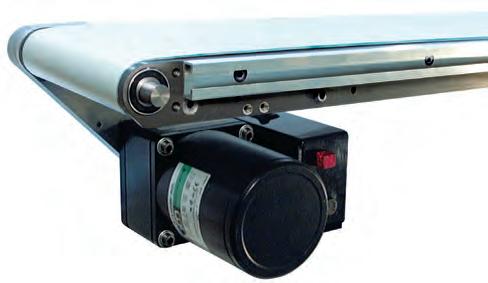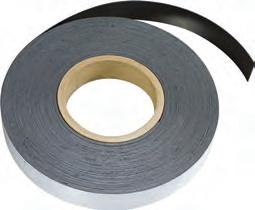
3 minute read
Magnet Basics & Safety Information
MAGNET MATERIALS
Flexible magnetic strips are made of a Ferro-Magnetic powder with a polymer bonding. These low energy strips resist demagnetization and will not chip, crack or shatter. Flexible magnets form to any contour and are often used for labeling or advertising purposes. Flexible magnets can be cut, drilled or shaped. Maximum temperature 160°F (70°C).
Advertisement
Ceramic magnets are made of Strontium Ferrite (SrFe) in a sintering process. Ceramic magnets are staples in the electronic, automotive, medical, mining, oil industries, etc. Ceramic magnets are medium strength magnet material with a high resistance to demagnetization, long time stability (loses 0.5% of its magnetic strength in 100 years), brittle material that has to be cut with diamond tipped blades. Temperature rage -148°F (-60°C) to 480°F (249°C).
Alnico magnets are made of Aluminum, Nickel and Cobalt (AlNiCo) in either a casting or sintering process. Used in application environments that have high heat, Alnico magnets offer medium strength and the best temperature characteristics of any standard magnet material. Alnico magnets have a medium resistance to demagnetization and are very hard and brittle. Machining or drilling cannot be accomplished by ordinary means. Temperature range -167°F (-75°C) to 800°F (427°C).
Rare Earth Neodymium-Iron-Boron (NdFeB) magnets are made in sintered as well as bonded forms. Commonly referred to as Neo, this magnet material provides the highest magnetic strength of any magnet material, very high resistance to demagnetization and is ideal for applications requiring maximum strength in a limited area. Neo is usually coated or plated to prevent oxidization due to its high iron content and therefore grinding of Neo material must be avoided. Temperature range -302°F (-150°C) to 180°F (82°C).
Rare Earth Samarium Cobalt (SmCo) magnets are made in a sintering process. Samarium Cobalt has the highest magnetic strength combined with high temperature range making it ideal for applications requiring very high strength in hot environments. Temperature range -302°F (-150°C) to 392°F (200°C).
MAGNET SAFETY FACTORS
Our magnetic material meets Magnetic Materials Producers Association (MMPA) standards for physical quality and magnetic properties. Some magnetic material is brittle in nature and minor defects such as chips and hairline cracks are unavoidable.
When selecting a magnet for your application, consider the physical shape of the part (round, convex, concave, etc.) and the surface condition (rough, rusty, dirty, oily). Both can result in air gaps* between the contact points on the magnet and the work material, thereby reducing the magnetic power. These factors and the information in this catalog will aid in choosing the correct magnet for your application. If you have specific questions, our application experts can help you select the right magnet material for your application requirements.
•Work surface •Temperature •Direction of magnetization •Finish •Part size, thickness and weight •Material - Ferrous or non-ferrous •Gauss •Contact area between magnet and part •Continuous or intermittent operation •Tolerance
*Air gap - The air, protective coating, paint, galvanizing, oil, rust, dirt, etc. between the magnet and the part.
LOSS OF MAGNETISM
Under normal use conditions, a permanent magnet can experience a decrease in its original holding value. The most common factors which can cause a loss of strength include:
Every day wear and tear on the magnet face. Exposure to extreme temperatures outside the magnet’s temperature range. Severe blow or shock to the magnet. Do not use a blunt instrument to position the magnet on the load. Exposure to electrical currents. Never place the magnet next to a large motor or generator. Never use the magnet as part of a welding ground circuit. Exposure to vibration.
LIFT MAGNET SAFETY FACTORS
Lift magnets can be effective even when the surfaces of the magnet and/or load have dirt, paint, scale or other debris on them. However, the best efficiency of any magnetic lift is achieved when these surfaces are clean and the poles of the lift (the surfaces in contact with the load) have good, uninterrupted contact with the load.
It is therefore recommended to:
Avoid setting down the lift magnet in places on the load that are dirty or have rough surface texture. Clear any foreign material from the load before setting the lift magnet on it. Occasionally check the mechanical condition of the magnetic poles to make sure they are flat and have not been damaged during use. After using the lift magnet, protect the pole surfaces with oil. This will keep the steel surface from rusting.










